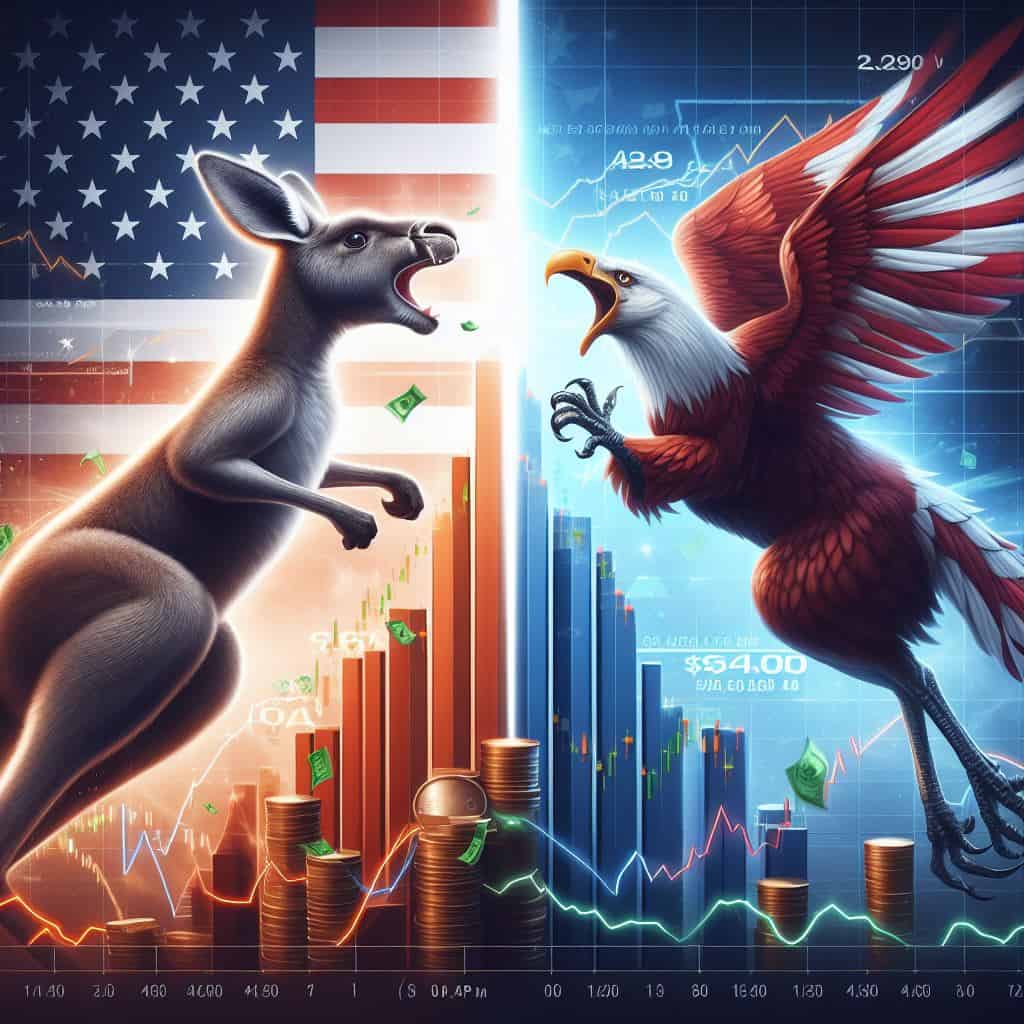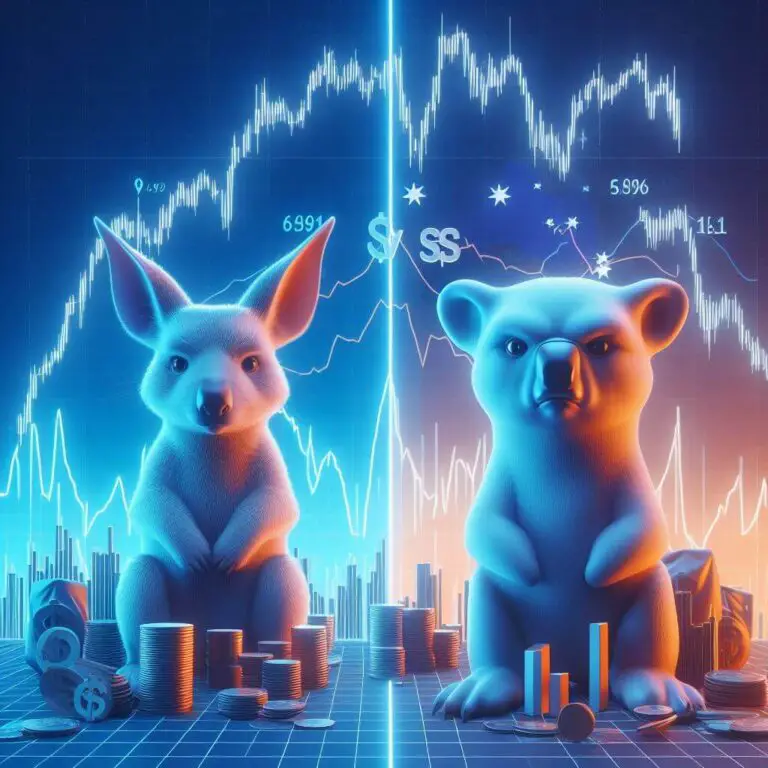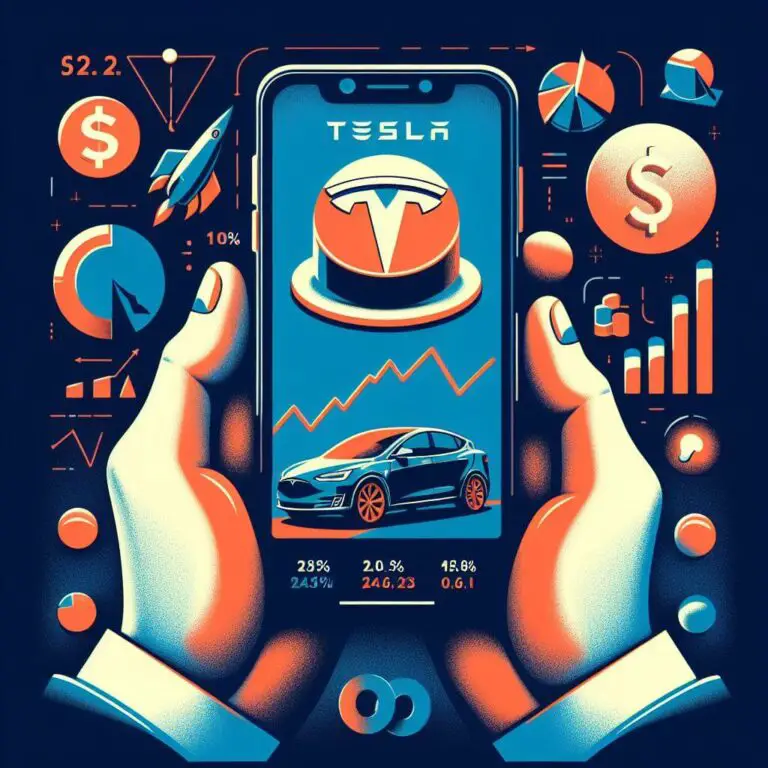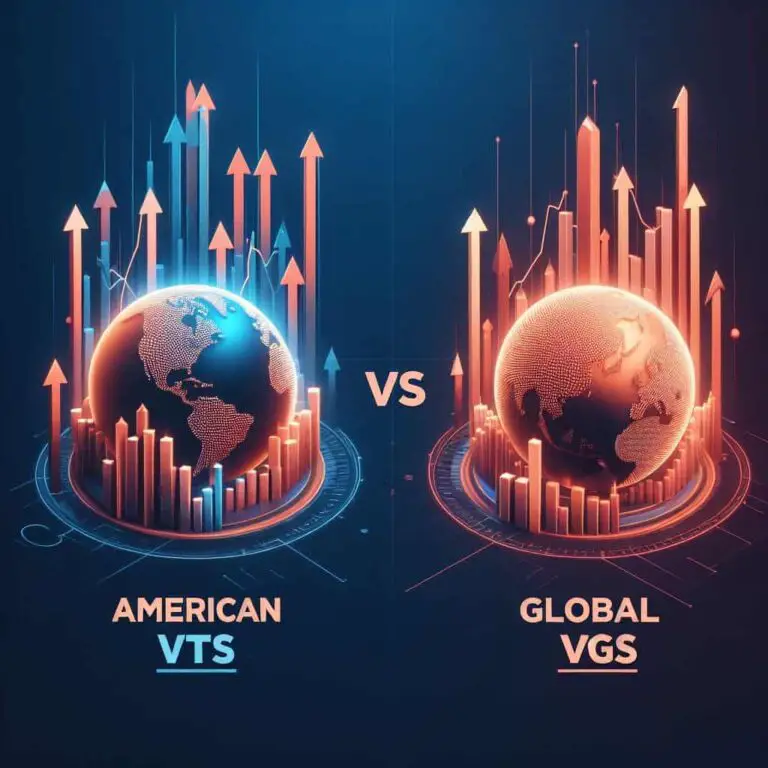VAS vs IVV: Maximizing Growth Potential With ASX and S&P500
Last Updated on 12 March 2024 by Ryan Oldnall
The choice between investing in the Australian share market and the American stock market presents an intriguing dilemma. Investors often have a domestic bias, leaning towards familiar investments over those to which they have no emotional attachment with.
This is often the case for Australian investors who have a tendency to invest heavily in their own domestic market. Whilst past performances is not an indicator of future performance the two markets have returned very different results over the past decade.
Over the last decade, the ASX 300 has achieved a total annualized return of 8.06% [1], which notably lags behind the 14.14% return of the S&P 500 [2].
In this article, we’ll take a closer look at two of Australia’s most popular ETFs: Vanguard Australian Shares Index ETF (VAS), known as the largest ETF in Australia, and the iShares Core S&P 500 ETF (IVV), a fantastic option for those interested in US markets.
We’ll perform a direct comparison of their management expense ratios, historical performances, annualized returns, holdings, and market capitalization.
Using data from Yahoo Finance and Morningstar, we’ll analyze the performance of both VAS and IVV, exploring the factors driving their performance and assessing the potential benefits of holding both ETFs [3][4].
VAS ETF Review
Pros
Cons
Introduced in 2009 by Vanguard, a globally recognized investment management firm with over 50 million investors worldwide, Vanguard’s Australian Shares Index ETF (VAS) stands as Australia’s largest ETF.
VAS closely tracks the performance of the S&P/ASX 300, comprising the 300 largest companies listed on the ASX, before fees and expenses.
Vanguard, with its significant presence in Australia since 1996, manages over A$10 trillion in assets globally [6], highlighting its prominence in the investment landscape. Currently, VAS holds a substantial $14.6 billion in assets under management [5].
IVV ETF Review
Pros
Cons
The BlackRock iShares S&P 500 ETF (IVV), introduced in 2000 by the globally renowned investment management firm BlackRock, stands as a popular choice for investors seeking exposure to the U.S. stock market.
IVV closely tracks the performance of the S&P 500 Index, comprising of the 500 largest and most influential American corporations.
As of January 2024, BlackRock manages assets totaling approximately $10 trillion, marking a substantial increase of nearly a trillion dollars since March 2023 [7].
In a move aimed at streamlining the investment process for Australian investors and offering better tax advantages, IVV was domiciled to Australia in 2018. This shift reduced administrative burdens such as the W8-BEN requirement.
Furthermore, in December 2022, IVV underwent a 15:1 stock split, meaning that for every IVV ETF held, investors received 15 ETFs. While a stock split may not yield immediate profit or loss, its primary advantage lies in providing individual investors with increased liquidity and accessibility to the ETF.
VAS vs IVV Management Expense Ratio (MER)
When comparing VAS and IVV in terms of management expense ratios (MERs), or how much it costs to hold the ETFs, both are competitively priced. VAS boasts an MER of 0.07%, while IVV is even more cost-effective at 0.04%.
In fact, IVV stands as one of the joint cheapest options on the ASX alongside A200 at just 0.04%. I have previously reviewed the lowest ETF management fee options in Australia.
The number of equity holdings do differ with VAS investing in 309 equities, while IVV stands 503.
When it comes to dividend yield, they are worlds apart. VAS has a current yield of 5.24%, which compares favorably even against the index average of 4.41%. This yield does not take into account franking credits, which is another incentive for Australian investors.
IVV, on the other hand, has a yield of 1.50%, which is higher than its index at 1.45%, though significantly lower than VAS. US technology stocks are hardly known for paying out high dividend yields to their investors after all.

VAS vs IVV Performance Chart

VAS VS IVV Annualised Returns

When comparing the annualized returns of both VAS and IVV, there is a clear winner across all return periods. Assessing the year-to-date (YTD) performance, IVV has outperformed VAS fourfold, with VAS year to date performance at 1.10% and IVV at 4.86%.
Looking at the short term, the 1-year annualized return for VAS was a respectable 6.59%, while IVV returned a mammoth 28.36%. This impressive IVV return follows significant losses in 2022 when it dropped by 9.03%.
Examining the 3-year annualized returns, VAS delivered a very respectable 9.28% return. Many investors would be happy with such returns averaging 9.28% per year over three years. However, when compared to IVV, which posted a 16.34% return over the same period, the difference becomes evident.
Over the medium to long term, VAS’ 5-year annualized return actually improves to 9.67%, which is 0.39% higher than its 3-year annualized return of 9.28%. On the other hand, IVV once again delivers a significant 5-year annualized return of 16.20%.
Lastly, when comparing the long-term performance of both ETFs, the longevity in performance really begins to shine. Both VAS and IVV are well-established ETFs in their own right.
VAS has a 10-year annualized performance of 8.28%, while IVV boasts a 15.55% 10-year annualized performance. Using Morningstar data, we can demonstrate what this means for investors in real dollar terms.
If you had invested $10,000 in VAS 10 years ago, your investment would now be worth $21,703. However, if you had invested that same $10,000 into IVV, your investment would be nearly double that at $44,873 [8]!
VAS Top 10 Holdings

When examining the top 10 holdings of VAS, they align with expectations for an ASX ETF aiming to replicate the overall market. The ASX itself is largely made up of mining and financial corporations, a characteristic reflected in this top 10 line-up.
This observation echoes points made in several of my previous ASX review comparisons, including A200 vs VAS, IOZ vs VAS, and VHY vs VAS, with the exception of MVW vs VAS.
VAS‘ largest holding is BHP, accounting for a substantial 10.21%. This mining giant dominates all major ASX ETFs, whether they track the ASX200 or ASX300. Following BHP is Commbank at 8.39%, and the formerly government-owned Commonwealth Serum Laboratories, CSL, at 6.21%.
In terms of investor implications, for every $1000 of VAS owned, you would hold $102.1 worth of BHP shares, $83.90 of Commbank, and $62.1 in CSL.
IVV Top 10 Holdings

Much like VAS, the top 10 holdings of IVV mirror those of other ETFs that focus on the US market or even global ETFs like VGS. Given the sheer size, scale, and global presence of these companies in our everyday lives, it’s common to find similar top holdings across many of the ETFs I review.
IVV, which tracks the S&P 500, features some of the largest and most prominent American companies therefore it comes as no surprise to see Microsoft leading the pack at 7.00%, followed by Apple at a healthy 5.82%, and NVIDIA at 4.97%.
In terms of investor impact, for every $1000 invested in IVV, you would hold $70 worth of Microsoft shares, $58.20 in Apple, and $49.70 in NVIDIA.
VAS vs IVV Top 10 Holdings As A Total Percentage Of ETF

It will come as little surprise to those familiar with either the ASX 200/300 or the S&P 500 that the top 10 holdings dominate the overall weighting of the ETFs.
Both VAS and IVV are market-weighted, meaning that the larger the company, the larger its holding in the ETF. Consequently, both are heavily influenced by a small number of holdings.
For VAS, this translates to the top 10 holdings, as mentioned above, accounting for just under half of the entire ETF, at 46.77%. This leaves the roughly 299 other companies invested under VAS to share the remaining 53.23%.
If these 299 companies shared this on an evenly weighted basis (which they don’t), each would have 0.178% of the ETF’s investment allocated to them.
A similar scenario applies to IVV, with its top 10 holdings making up 31.98% of the total ETF. With IVV currently holding 503 companies, this leaves just 68.02% to be distributed among 493 other companies.
Like VAS, these 493 companies within IVV would share just 0.138% of the remaining allocation of investment if done on an evenly weighted basis. Again, this is not the case with either ETF which are not evenly weighted.
My short review of MVW vs VAS was interesting because MVW is an evenly weighted ETF. This means that each holding has an equal share of the pie, regardless of size, an intriguing concept with returns that are actually quite surprising!
VAS vs IVV Market Cap

When examining the market capitalization of both VAS and IVV, it’s evident that they are heavily skewed towards large and giant caps, although it’s important to recognize that the scale differs significantly between the ASX and the S&P 500.
Australian companies are comparatively smaller when compared to their counterparts in the S&P 500.
VAS allocates 40.52% to giant caps, while IVV has a slightly higher allocation at 46.60%. Shifting focus to large-cap companies, VAS predominantly comprises 32.19%, whereas IVV holds a higher proportion at 34.81%.
In terms of mid-cap companies, VAS allocates 20.39% of its ETF, whereas IVV has a slightly lower allocation at 17.89%. Additionally, VAS has a small allocation to small and micro-cap companies, with 5.27% and 0.38% respectively, while IVV only has a fractional allocation of 0.42% to small caps and does not include micro-cap companies.
Summary – Managing Portfolio Exposure
When comparing the Vanguard Australian Shares Index ETF (VAS) and the iShares Core S&P 500 ETF (IVV), focusing solely on performance would be inadequate. It’s evident that IVV and the S&P 500 consistently outperform the ASX 200/300 over time.
The sheer size of the American market significantly surpasses that of Australia, prompting investors to consider how they can integrate both the ASX and the US market into their investment portfolios.
I’ve extensively covered various US, global, and ethical investment opportunities, which I’ll list at the end of this article.
In my view, investors should seek to maximize their exposure to global markets, not just Australia or the US. The allocation ratio depends largely on the investor’s risk appetite.
For newer investors, I recommend reviewing the investment allocations of their super funds under options like High Growth, Growth, Balanced, etc.
This provides insight into the weighting placed on each investment. Examples of such reviews can be found in my Vanguard Super Review, Australian Super Review, and Australian Retirement Trust Review where I break down the specific weightings for each investment option.
Overall, both IVV and VAS are heavily influenced by a few large, influential, and high-performing companies. However, there’s uncertainty about whether the S&P 500 can maintain its current long-term growth trajectory as observed over the past 15 years.
This article does not serve as an endorsement or recommendation for products mentioned in the article. The information presented here is based on referenced sources and is accurate as of the date of 09 February 2024. Please note that these articles are written sometime before their publication date.
The information provided in this content is for informational purposes only and should not be considered as financial, investment, or professional advice. We recommend consulting with a qualified expert or conducting your own research before making any financial decisions.
The accuracy, completeness, or reliability of the information cannot be guaranteed, and the provider shall not be held responsible for any actions taken based on the information contained in this content.
References
- https://www.spglobal.com/spdji/en/indices/equity/sp-asx-300/
- https://www.spglobal.com/spdji/en/indices/equity/sp-500-growth/#overview
- https://au.finance.yahoo.com/
- https://www.morningstar.com.au/
- https://www.vanguard.com.au/corporate/
- https://www.vanguard.com.au/personal/invest-with-us/etf?portId=8205&tab=holdings
- https://www.bloomberg.com/news/articles/2024-02-09/nycb-jumps-as-ceo-board-buy-shares-after-4-billion-selloff
- https://www.morningstar.com.au/investments/ideas
- IVV vs VGS: Which ETF Delivers Better Returns?
- NVIDIA’s Market Value Plummets: $418 Billion Lost Since July Peak Amid 9.76% Weekly Share Price Drop
- Is CrowdStrike Stock a Good Buy Following the Recent Outage?
- VGS vs QUAL: The Best Diversification ETF vs Quality Index
- NDQ vs FANG: Which Tech ETF Is Right For You?







